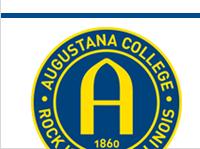Course
Honors
Document Type
Student Paper
Publication Date
Spring 5-8-2019
Disciplines
Language Interpretation and Translation | Latin American Languages and Societies | Latina/o Studies | Television
Description, Abstract, or Artist's Statement
Bilingual people often find themselves in a situation where they switch from one language to another. As with the number of Spanish speakers exponentially increasing in the United States, “code-switching” within Spanish and English is more noticeable within work spaces. When and where does code switching occur? Why does it occur? And what does it mean about the work environment? This essay will argue that code switching can be used within any environment, regardless of class or education. First, it’s important to know the history of code switching and how it differs from Spanglish. “In-groups” can be formed with basic similarities and can affect code switching. There are different places one could code-switch, and there doesn’t exist much research on code switching within formal settings. Some think that people switch languages due to lack of education and knowledge of the language, but switches are due to stylistic choice and emphasis. This information will be combined with a study of editorial meetings within a bilingual company, Telemundo Chicago. Using transcriptions of editorial meetings at Telemundo, situations in which code switching occurs will be analyzed, and it will be seen how code switching is used in a workplace to conserve identity and create an in-group.
Keywords: Code Switching, Spanglish, workplace, television, Telemundo, Hispanics, informal, Spanish, English.
Augustana Digital Commons Citation
Ricossa, Montserrat. "Code-Switching in a Bilingual Workplace" (2019). Honors Program: Student Scholarship & Creative Works.
https://digitalcommons.augustana.edu/honrstudent/10
Included in
Language Interpretation and Translation Commons, Latin American Languages and Societies Commons, Latina/o Studies Commons, Television Commons
